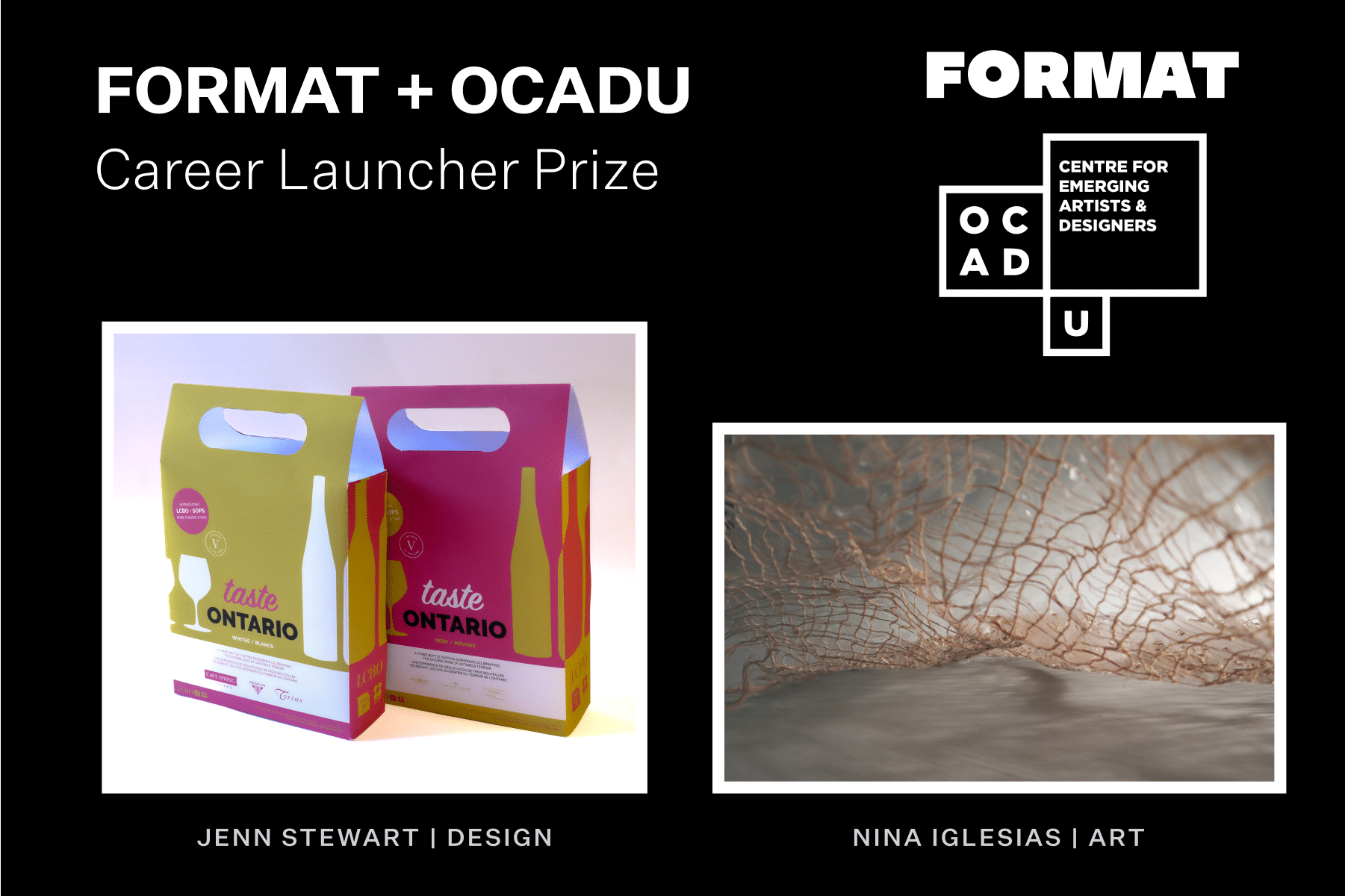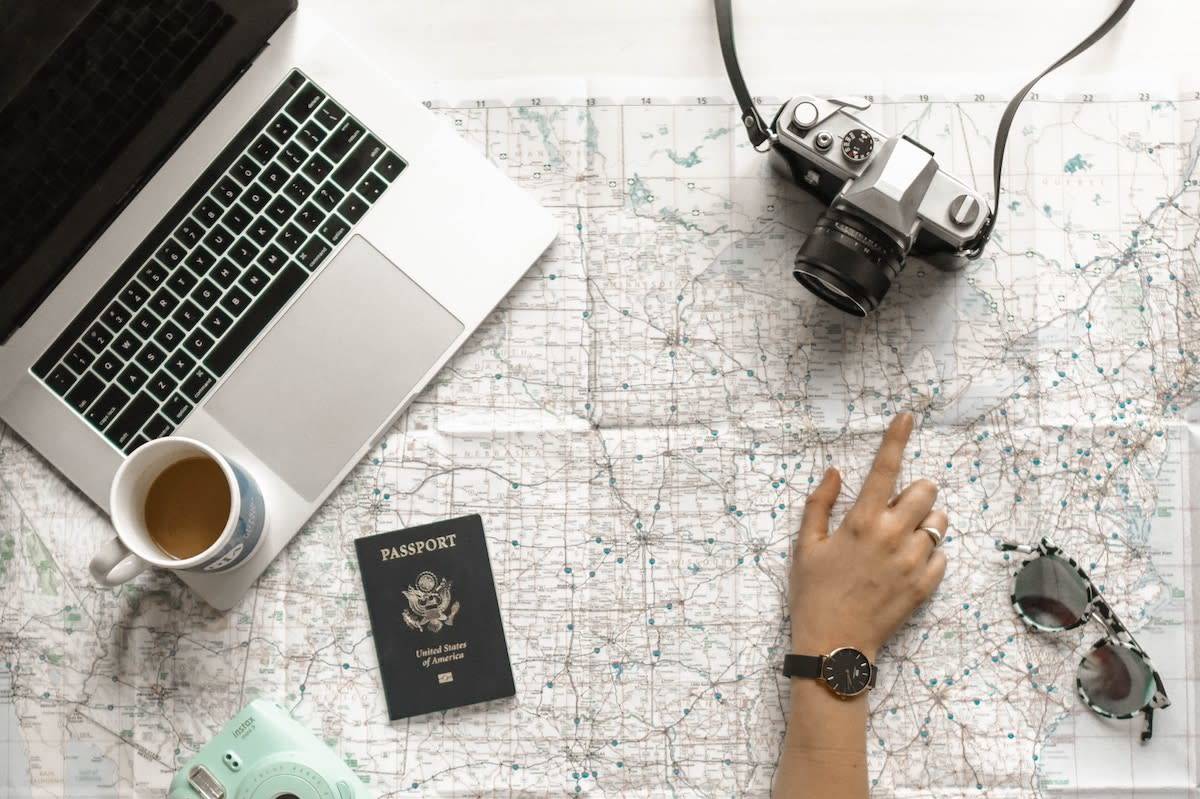Format is pleased to announce the winners of the second annual Format Career Launcher Prize in partnership with the RBC Centre for Emerging Artists and Designers at OCAD University (OCADU): Jennifer Stewart and Nina Iglesias as well as runners-up Anson Zheng and Pixel Heller.
Since 2012, Format has partnered with OCADU, Canada’s largest and oldest art and design institution, to provide free website hosting to students while they are enrolled and for six months after graduation. This ongoing annual award will be made available to one eligible graduating designer and one eligible graduating artist each year.
In addition to supporting these emerging creatives through a free life-time subscription to Format and a monetary prize, Format is featuring their websites within our community, celebrating their work and providing them with exposure to help jump-start their careers. This prize aligns with Format’s mission to promote the future of art and design by giving students a launch pad for their professional journey. In 2022, Format and its parent company, Zenfolio Inc., announced a pledge to give $1million worth of website subscriptions to students studying art, design, photography, and related fields.
Meet the winners:
In this article, we meet the winners of the second annual Format Career Launcher Prize and hear about their visions for life after graduation. We hope you will join us in celebrating these talented graduates and visit their websites to follow their journey.
Best Design Portfolio: Jennifer Stewart
My name is Jenn Stewart. I’m originally from Courtice, Ontario, but I’m currently living in Toronto’s West End.

I can’t really remember a time in life when I wasn’t interested in the arts. I always knew I would pursue a creative field, but after high school I didn’t really know which direction to take. I actually first started in fashion at George Brown, but I ultimately decided it wasn’t the right fit for me. But that program is where I first used Illustrator and started to get into designing digitally. And that’s where my interest in editorial design grew, which led me to pursue graphic design at OCADU.
I recently graduated from the graphic design program at OCADU. Going into third and fourth year, I became interested in using information design to simplify learning. I realized I could use design to educate my audience in topics that I was personally interested in outside of my design practice. For example, in my thesis work in my last year at OCAD, I chose to make a book about natural wine. And that was a direct result of working in the hospitality industry throughout my OCADU career.

I created a book titled Define Natural; it’s a natural wine encyclopedia. I created it because working in hospitality gave me insights into natural wine and illuminated the lack of modern literature about this topic. As I realized how many people were interested in natural wine, yet didn’t know a lot about it, I just figured it was a great place to fill a void using my skills. So I wrote, designed and illustrated a book that gives a brief overview of what natural wine is, how it’s made, and how to define it. Through this project I was able to bring together my interests in informational and editorial design in a way that felt like a real culmination of my last year at OCADU.
I found the process of making my Format website very user friendly. Before I realized OCAD had this partnership with Format, I tried making websites on other platforms throughout the years, but I never finished any of them. I always ended up running into non-customizable areas or the whole platform was impossible for me to navigate. I don’t know why, but with Format, it felt very easy to me. I ended up taking advantage of a lot of the fully customizable pages and creating my layouts from top to bottom. I also really appreciate the option for file transfers. It creates such a simple and professional option to send files to clients. It’s a feature I utilized in my freelance practice.
I see my Format website playing a huge role in my career and as I transition from being a student to professional, having an online portfolio is such a necessity in graphic design and being able to customize it easily as my work grows and evolves in my professional practice is such a huge asset.

Looking to the future, I would like to see myself in a design studio. Getting to work on a multitude of projects at a time and try my hand at a little bit of everything would be ideal. I really enjoy all aspects of graphic design and I don’t want to limit myself by focusing on a specialized area. So I think a design studio or something in-house would be the most ideal for my future design practice. I’d also really like to continue working on my book from my thesis. It is a finished project, but as a designer there’s always something to fix or nitpick. And I’d love to do another run of it and get it in some wine stores around the city.
If I could give any advice to aspiring designers, it would be to do your research and take advantage of the opportunities that are available to you. Sometimes that means something as simple as scheduling a call with your professor or browsing your school library, but the resources that you have as a design student, you may never have again. There are so many spaces and chances you can use to grow your practice. You just have to know what’s out there. And this prize from Format is a perfect example of that. There are so many opportunities available to young designers and students, you just have to figure out what they are and use them.
Best Art Portfolio: Nina Iglesias
https://ninaiglesias.format.com
My name is Nina Iglesias and I’m from Mississauga, Ontario, Canada. I was born and raised there. I moved to Toronto to go to school at OCADU.

My program at OCADU is called Material Art & Design. It’s basically a craft program for textiles, jewelry, and ceramics. I majored in textiles, but I also took some jewelry classes. Through these courses I fell in love with weaving and natural dyeing. I love how natural dyeing doesn’t stick to a methodology. You can follow a recipe, but the dyes will just make their own decisions. And I kind of love that idea of relinquishing control as a maker to the materials you’re using.
I took that idea into my thesis project. I was learning lessons from the land, feeling interconnected natural materials and animals. I wanted to use these lessons within my art practice. By removing the hierarchy in my materials, by removing my own hierarchy within the natural world, it’s a step to overcoming my own individual struggles with colonialism and other systems of power.
I was reading Robin Wall Kimmerer’s Braiding Sweetgrass and I really loved her ideas about being able to see the love that the land gives us in everyday life. So with this work it’s me wanting to give back that love, reciprocate it. I’m Filipino, I’m the child of immigrants, but I’ve never lived in the Philippines and I wasn’t born there. I was born here. I live here. So, as a settler, I wanted to establish a connection to the land here in a way that felt authentic to me.

Going forward, I really want to get into performance more. I’ve been really into land based work and really inspired by artists who make site specific pieces. Lately, I’ve been really into the idea of burying pieces. I recently went to Mexico City for a grad trip and went to the Templo Mayor. We saw Aztec burial caches that had been unfortunately excavated but they were on display at the museum and there were these really gorgeous intricate ceramic pieces that had been buried in these chests along with bones and shells and other like ritualistic items. The sentiment really touched me as a creator- that someone could put some much care into creating an object and then give it away to the land. I like that idea of being able to give a piece to the land as a gift.
Using Format was really intuitive. It’s not like Photoshop where you have all of these tools you don’t really know what they do. The Format functions are all out in the open. I like how there are so many templates, but they’re all so easily customizable. Also the templates let the work speak for itself. If I had to build a website from scratch I wouldn’t even think of a lot of these functions myself. I got a lot of great ideas from the Format templates.
We are in the digital age now and not everyone’s carrying around business cards or physical portfolios anymore. And you can’t just use Instagram or a blog as your portfolio–it’s not quite professional enough. You definitely need a solid portfolio and website to network and access opportunities, for things like residencies and gallery shows. It all needs to be there and ready to see so that the other party can view all of your work. I feel pretty set having a solid portfolio now going into the professional world after school.

I’m going to Estonia in August. It’s an international program organized by my thesis advisor, Nithikul Nimkulrat. She used to be the head of textiles at the Academy of Arts in Tallinn. She’s organized a two week residency and collaboration between the two schools. It will be an exciting opportunity to work with both analog and digital media because they have an amazing Jacquard loom, which I’ve never used before. They also have facilities for everything from leather work and ceramic to VR.
If I had one piece of advice for an emerging artist, it would really be the same advice I would have given to myself a couple of years ago–and that would be to allow yourself to play and explore. Because I feel like in those moments of play, you discover what you really want to do and what direction you really want to take your work in. Similarly, when you’re kind to yourself and to your materials, you are able to be happy with any sort of outcome that you produce. And that’s definitely something that I learned this year through my thesis.














